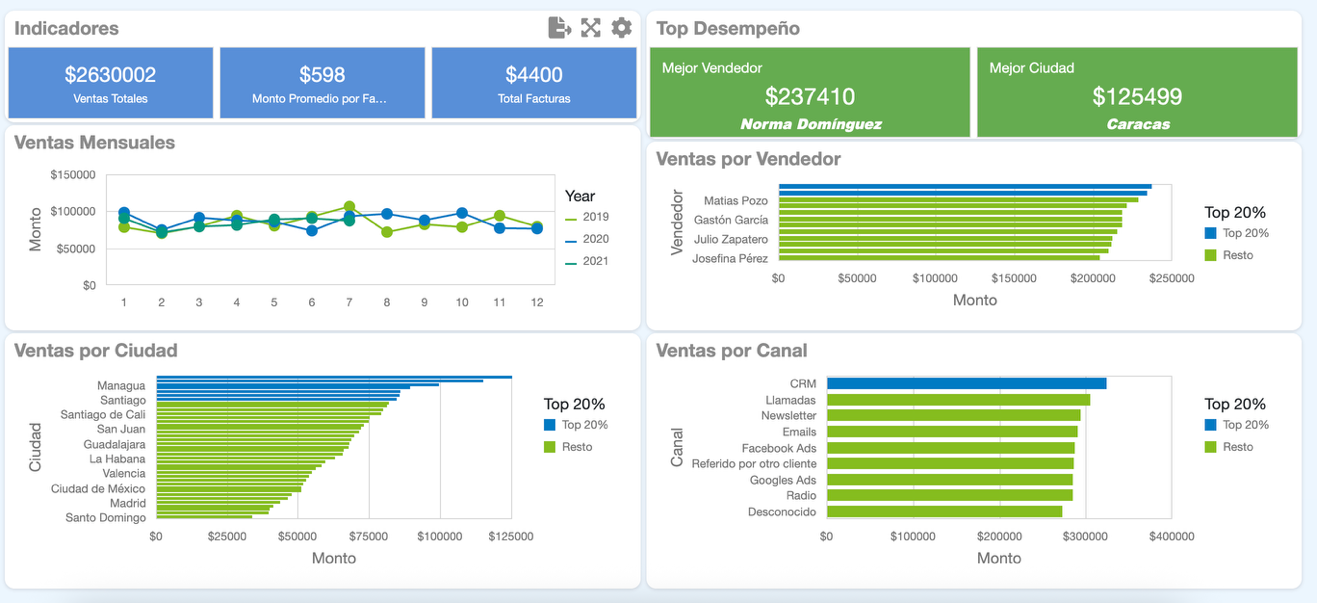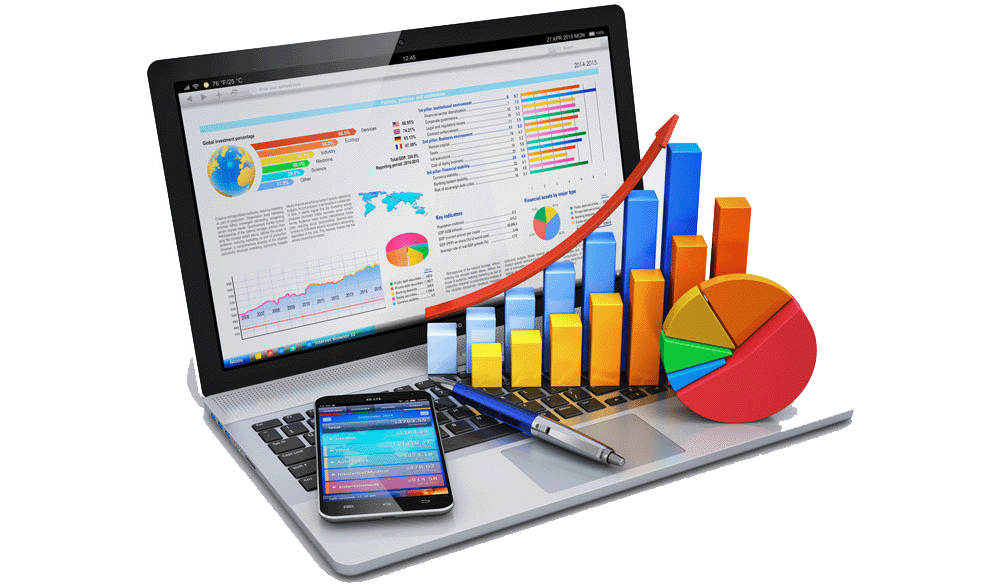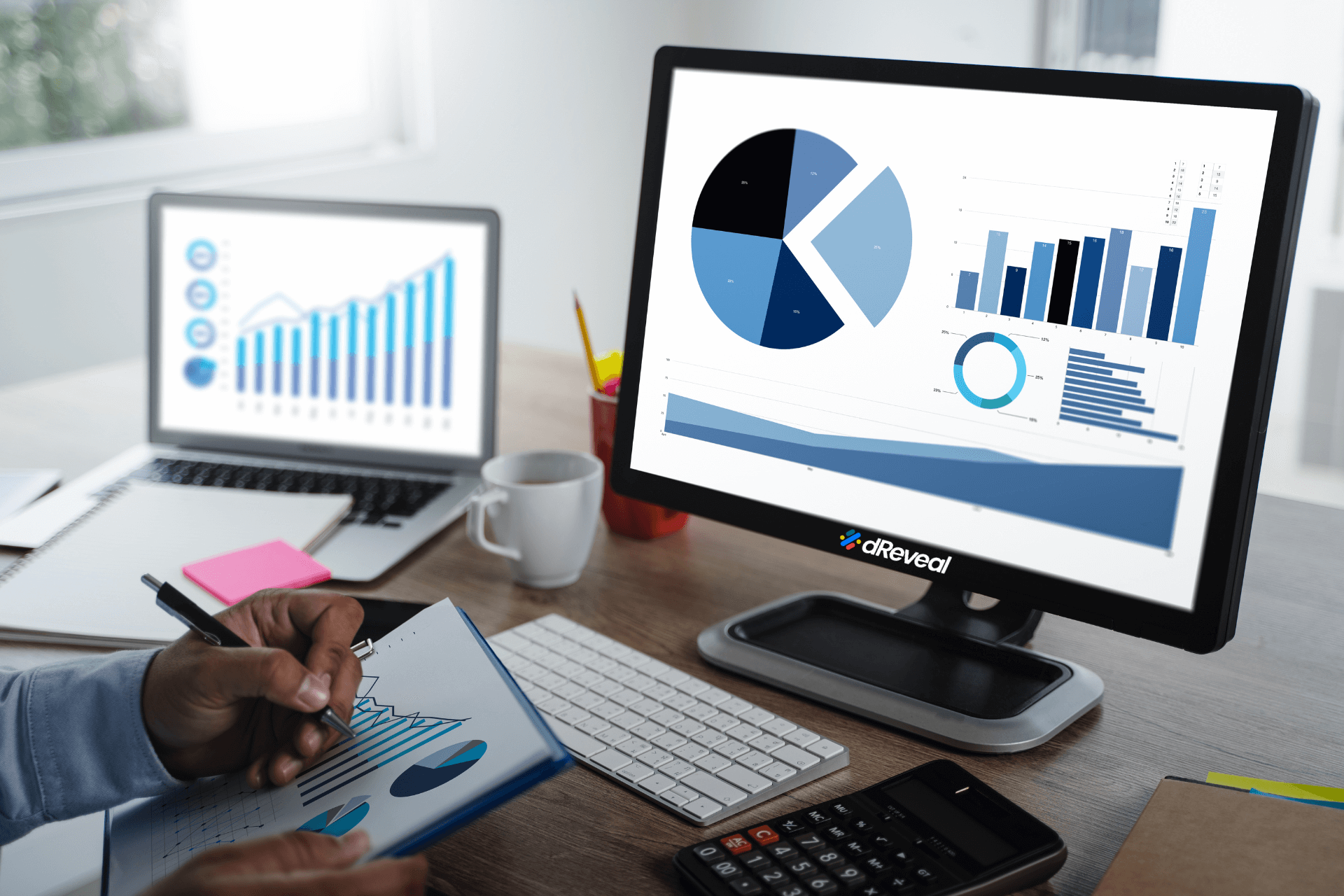Master Your Sales: How to Build a Dashboard That Drives Real Results

In the world of sales, information is power.
But how do you turn millions of data points into smart decisions and concrete results?
The answer lies in a well-designed sales dashboard, like the one shown in the image.

Key Questions Before You Start
A successful dashboard isn’t just about good-looking charts — it’s about answering the questions that truly move the needle. Before designing your dashboard, ask yourself:
- What sales goals do I want to track?
Increase total sales or improve conversion rates by channel? - Which metrics are truly critical for my team?
Example: monthly sales, performance by rep, sales by city and channel. - Who are the main users of this dashboard?
Only managers? The entire sales team? - What decisions do I want to make with this information?
Recognize top performers? Reallocate resources to the most effective channels? - How often do I need the data to be updated?
Daily, weekly, monthly?
Tips for Powerful Data Presentation
Simplicity first: less is more. Choose only the key indicators (KPIs) that truly add value in the context of your strategy.
- Visualize trends: use line and bar charts to show evolution and compare periods. Spot patterns and opportunities faster.
- Segment your data: show results by salesperson, city, and channel to identify where to take action quickly.
- Highlight the top 20%: spotlight your top performers to motivate and focus team efforts (as shown in the sample dashboard).
- Use strategic color coding: apply color to differentiate top performance from the rest, making the dashboard easier to read.
- Make it actionable: each chart should point to a specific action — recognize, coach, or adjust strategy.
Sales Dashboard Trends for 2025
According to Gartner and Harvard Business Review, effective dashboards are defined by:
- Data automation: direct integration with CRMs and sales systems for real-time reporting.
- Personalization: dashboards tailored to each user, showing only what’s relevant to their role.
- Predictive analytics: leveraging AI to anticipate trends and recommend next steps.
(Source: Gartner, 2024) - Gamification: visualizing rankings and achievements to keep teams motivated.
(Source: HBR, 2023)
Take the Leap — Transform Your Sales Management
The real challenge isn’t just having data — it’s turning it into agile, strategic decisions.
A dashboard like this empowers you to:
- Celebrate top sales reps and cities
- Identify the most profitable channels
- Quickly detect areas for improvement
- Motivate your team with transparency and focus
Ready to Level Up?
Don’t get left behind. At dReveal, we guide you step by step to ensure your dashboard becomes a powerful decision-making tool — not just another report.
Book a free session with dReveal here and boost your commercial decisions with dashboards that deliver real results.


















